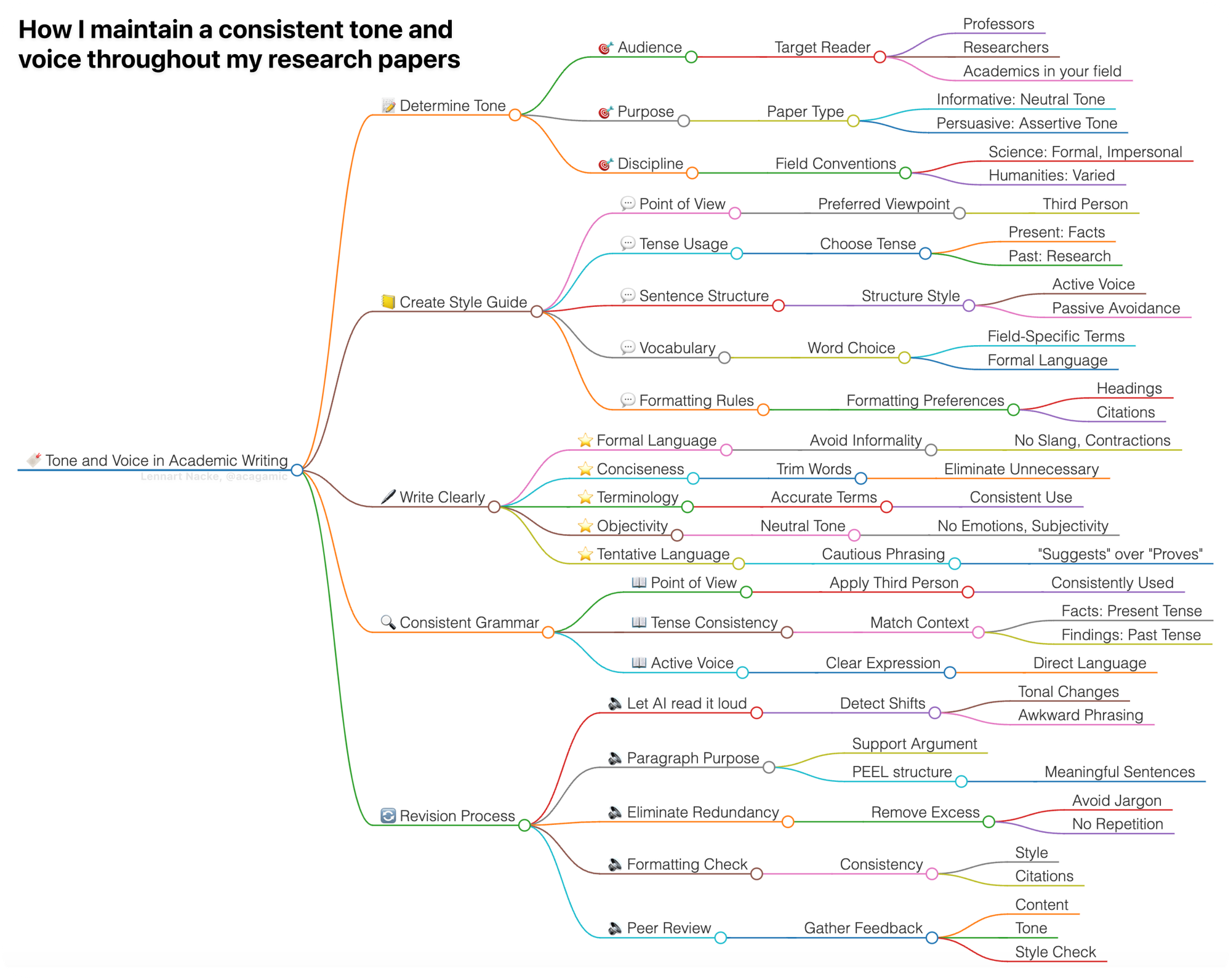Alright, my academic maestros, it’s high time to dust up the meat and potatoes of maintaining a consistent tone and voice throughout your paper. Because, let’s not kid ourselves, if your paper’s tone jumps around hyper like a caffeinated squirrel, you’re going to lose your readers faster than you can say “peer review.” And rest assured, we don’t want any of that. So, slurp up some brain juice (yes, brain freeze on a Slushee works for me, folks), and step on that gas pedal, because we’re in high pursuit of mastering a consistent tone.
Tone sets the vibe of your work, and it hinges on the words you choose and how you stitch them together. The key here is to match your tone to the audience and purpose of your work. Your tone should be polished, professional, and error-free. Word choice and sentence structure are the building blocks of this formality. Stick to factual statements, avoid inserting personal opinions, and maintain a steady, clear voice throughout; save the personal rants for your diary or sh*t like this newsletter (and now you know why I’m here). Consistency is critical. Our tone doesn’t have to be stuffy, just authoritative and precise, giving your arguments the respect they deserve.

1. Your Voice is Your Academic Soulmate
First things first, you have to find your voice. And no, I don’t mean that karaoke singing voice you use in the shower. (Don’t even get me started on smashing Jet’s “Are you gonna be my girl” in the shower, because I will do it every single time.) I’m talking about your writing voice, genius. It’s that unique blend of personality, style, and attitude that makes your writing distinctly yours. Think of it as your academic fingerprint—no two are exactly alike.
But it can’t be all fun and casual like Uncle Lenny here in this newsletter; your academic tone must be formal, objective, authoritative, clear, and concise. So, keep it formal but ditch the jargon. We’re not having a casual chat at Tim Hortons about the weather, eh, but that doesn’t mean you need to sound like a robot. And stick to the facts. Don’t let your opinions run the show. Unless you’re specifically asked to share your two cents, keep it objective. That’s the only time the “I” and “we” stuff gets the green light. You must also back up everything you say with solid evidence. Leave the emotional drama and wild exaggerations at the door. Academic writing thrives on hard facts, not hyperbole. Adding multiple perspectives to your voice is generally a good idea. Academic writing is all about being inquisitive and analytical, so put on your detective hat and compare different views. Show off your ability to juggle ideas like a pro. And, always, always, always, remain clear in what you say. Academic language should be explicit and straightforward. Use signposting to guide your reader smoothly from one section to the next or from one idea to another. But do you ever notice how some writers kick off every sentence with the same word? It’s like they’re stuck on repeat. Mix it up, folks! Don’t bore your audience to death with predictable openings.
- Choose your words wisely. You’re going for a formal tone, so don’t suddenly throw in “YOLO” in the middle of your methodology section.
- Maintain a consistent level of technicality. Don’t go from explaining quantum physics to your grandma to discussing string theory with Stephen Hawking’s ghost.
- Vary sentence length at regular intervals to keep things engaging, but don’t make it too long or too short. Papers aren’t a place for haikus or overly dramatic prose. Find the race around the middle ground. Mixing up your sentence structure is like adding a playlist to a workout. If every track is the same tempo, you’ll zone out fast.
Your voice isn’t about spouting opinions like a caffeinated parrot. It’s about the unique way you string words together to make your argument. It’s WHO the reader ‘hears’ when they’re up to their neck in your text. Are they hearing you loud and clear, or are they drowning in a sea of quotes and citations? Academic sources are your backup dancers, not the lead singer. They’re there to support YOUR show, not steal the spotlight. Your voice should be the star, belting out authoritative claims like a rock star on stage.
Developing your voice takes practice. It’s like training for a marathon—you don’t just wake up one day and run 26.2 miles. You’ve gotta put in the work, build that confidence, and know that what you’re saying is worth hearing.
Once you’ve found your voice, hold to it as tight as a koala. Consistency is key here. If you start off sounding like a stuffy Victorian professor and suddenly switch to a cool, hip millennial halfway through, your readers will get whiplash. Academic whiplash is not a good look on anyone. Avoid it.






